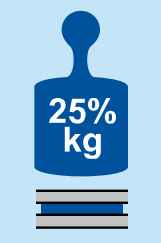There are a few considerations to take into account when designing a product which uses telescopic slides or linear guides.
Why can’t I fix a load to a single, vertically mounted slide?
Loads should be vertically mounted on both sides, so that it is sufficiently supported.
One-sided mounting will generate a torque on the mounting side, which cannot be absorbed by the ball bearings. This will result in the inner member being levered out of the outer member, as shown below.

Why a tall drawer front creates leverage that can cause high deflection and damage the slides:
As shown in the image below, a large lever will generate a torque (a linear force), which will have an effect on the telescopic slide. Since the telescopic rail cannot absorb the torque, it cause a deflection.
In such cases it is better to mount the slides at a higher position of the drawer or position the handle lower.

Can I mount any slide in a flat (horizontal) way?
Most ball bearing telescopic slides are designed to be mounted in pairs vertically, on the sides of drawers or the moving unit. There are some slides that can be mounted flat beneath the moving unit. If slides are mounted horizontally (flat mount) the load rating is decreased to approximately 25% of the vertical load rating. Some slides may have a lower or higher percentage.

This sign directly shows you the load rating of the slide compared to the load rating when vertical mounted.

A possible solution could be the use of mounting brackets. here you can see an example of our types 9301, 9308 and 7957. Of course you can also design your own individual mounting brackets or integrate them into your drawer / carcass design.
